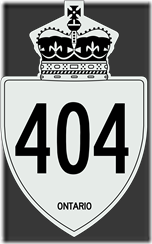A 404 error is an HTTP status codemnuj0 that indicates the page you were trying to reach is not available on the web server you are accessing. It simply means that web server you are tying to reach is not able to locate the page you were trying to reach that comes after the domain extension .com, .net, .org, etc. For example if you were trying to go to http://www.testwebsite.com/lostpage.html and got a 404 error it would mean that the web server at testwebsite.com could not find the page “lostpage.html”
These message are customized by websites quite a bit. Some webmaster have a lot of fun with these websites and get pretty creative with them. For many companies, it is an opportunity to advertise you a bit more. They may use this as an opportunity to tell you about other products or services they have, or to suggest a page you may have been trying to get to.
That means, there is really no standard image for these pages. However, if a webmaster leaves them uncustomized then certain operating systems do have default 404 pages. For example, Microsoft IIS and Apache both have default 404 pages.
Here are a couple of different variations of the message you may see:
- 404 Error
- 404 Not Found
- Error 404
- HTTP 404
- 404 File or Directory Not Found
You will find these messages in any version of browser whether you are using Google Chrome, Internet Explorer, Mozilla Firefox, Opera, etc. Furthermore, you will see them in any operating system you use whether it is Microsoft Windows, Linux, Mac OS, etc.
How Do You Get 404 Errors
This is typically a client side error. This means there is usually an issue on the client side of the operation. Many times it is because you incorrectly typed in the url, made a typo, the web page was removed or renamed, or you were told the wrong address.
If a page was moved or renamed, and the webmaster did not build a proper redirect then you will also receive this error.
Troubleshooting 404 Errors
The first thing you will want to do is refresh the webpage to make sure there was not a simple glitch. Just click on F5 to refresh the page to see what happens. If the page renders another 404 error then you need to dig deeper.
Next you will want to look for syntax errors in the url you typed. Make sure there were no misspellings or the page was entered incorrectly.
If you still get errors, back up to the directory to make sure there is not an error at the directory level. Keep backing up until you get an actual page with useful information.
If you continue to get the error see if you can enter the url in a search engine or the phrase you are looking for. See if you get the same results in the search engine. If you do get another page, then book mark that page for future reference.
You may have visited the page in the past and your web browser has cached the previous version. Clear your browser’s cache to see if this helps. It never hurts to do this as a troubleshooting step if you notice other people are able to get to the site from other devices.
If you still cannot get to the page after some time, then you may want to contact the website owner to see if they can help you. Many times you can find the contact information on the home page of the website. Otherwise, give it some time and the issue may work itself out.
Hopefully, this article has helped you better understand what a 404 error is, their causes, and what you can do to remedy the issue.
